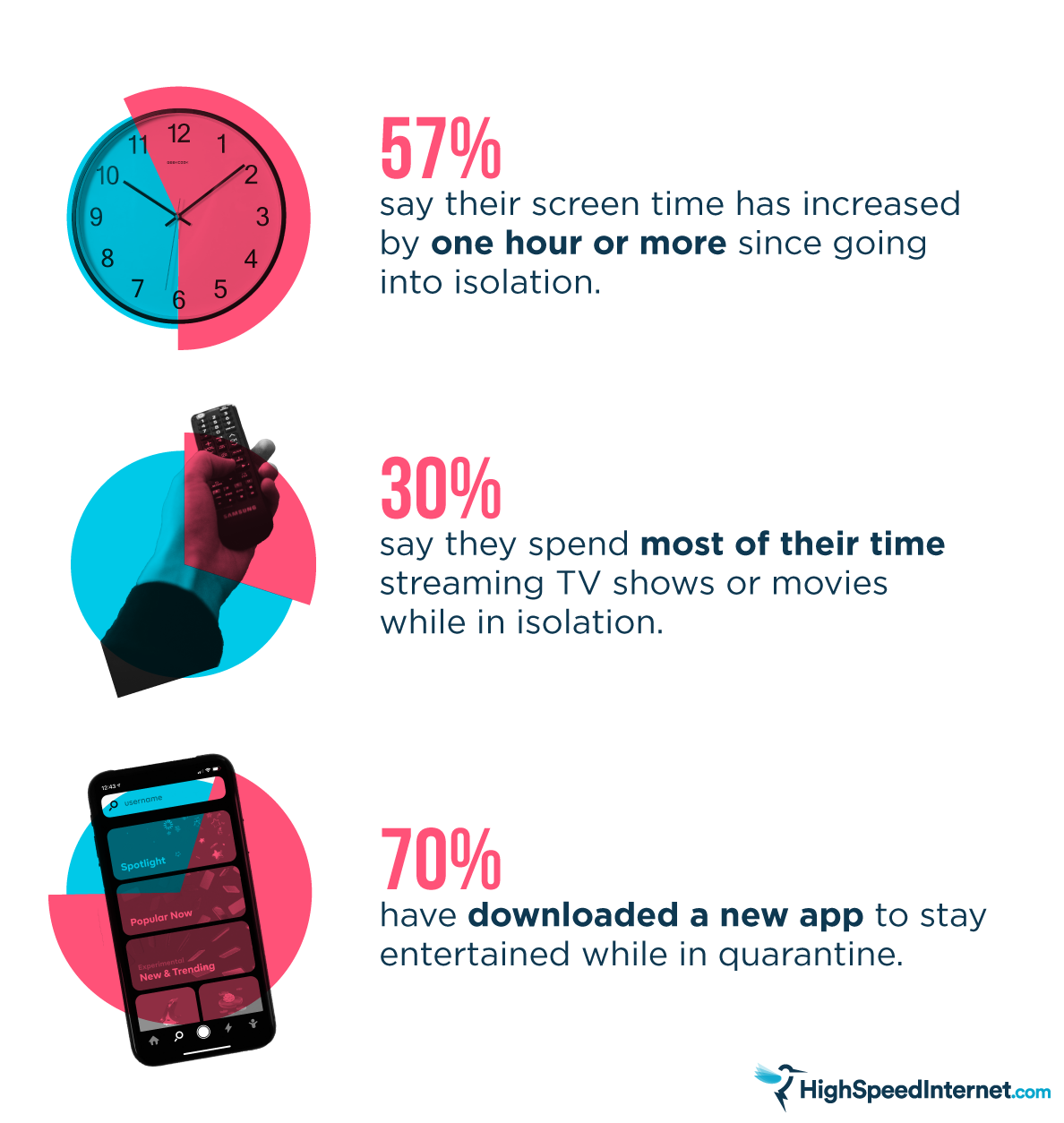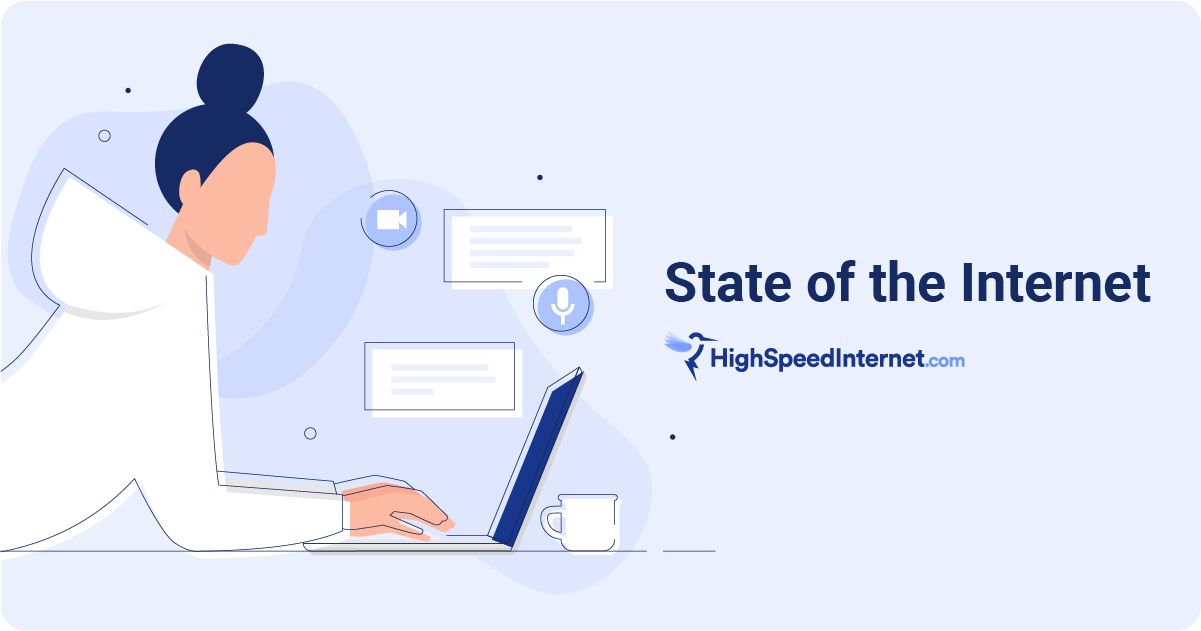Experts Reveal the Benefits of Screen Time for Kids
Jul 25, 2020 | Share
Industry Exclusive/Entertainment
If you feel like you’ve been glued to the couch lately, you’re not alone. According to a recent survey launched by HighSpeedInternet.com, screen time for kids (and for the U.S. population in general) has gone up exponentially since the beginning of the COVID-19 pandemic.
- 57% say their screen time has increased by one hour or more since the beginning of the COVID-19 pandemic.
- 30% say they spend most of their time watching TV shows and movies.
- 70% say they’ve downloaded a new app—either games or other entertainment—to pass the time.
With increasing numbers of children burying their heads buried in phones and tablets for long periods, we reached out to experts to see if there are actual benefits that screen time may have.

Is there such a thing as good screen time?
There are obvious risks to letting your kid spend too much time on YouTube, TikTok, or Netflix.
Schools have mounted legal challenges against social media companies over concerns that excessive social media use negatively affects students’ mental health and exacerbates disciplinary problems like cyberbullying. A 2018 study from the National Institutes of Health found that screen time can also impact the development of parts of the brain responsible for critical thinking.
But some experts stress that there are also lots of positive benefits to giving kids access to digital tools.
“Young children often learn their letters, numbers, colors, and shapes from watching YouTube videos,” says Jessica Leichtweisz, CEO of Hope Education Services and an expert on autism. “Almost all research suggests that the early use of technology is highly beneficial to children. It appears that most of the debate around the use of technology is nothing more than a generational and cultural gap.”
Diana Graber, the author of Raising Humans in a Digital World, argues that can help kids foster a sense of community, “Some benefits of screen time include providing a place for youth to connect with like-minded others, opportunities to explore interests and hobbies that aren’t available to one in ‘real’ life, and keeping in touch with far-away friends and family,” Graber says.
You can use technology to stay connected socially, which seems to be what many are turning to during the pandemic. Whether kids are chatting with family and friends or getting instructions from their teachers, experts believe that technology is a great tool for kids to build communication skills.
“Even many parents who say no to screens in all other aspects of their children’s lives are fine with video chats because the science supports that the serve-and-return conversation and real-time interaction are good for learning and bonding,” says Jessica Rolph, co-founder and CEO of Lovevery.
How do you define screen time?
Screen time definitions are broad and may include some of your child’s favorite ways to pass the time, like phones, tablets, TVs, gaming, and computers.
“For children, screen time is typically referred to as time spent watching television, which includes traditional television, streaming television or games on the television or playing games or streaming videos on a device such as a tablet or phone.”
—Jessica Leichtweisz, CEO of Hope Education Services, Autism expert
“I think of screen time as including playing video games (solo or with others online), cruising the internet, watching film/TV shows online, and video chatting with friends.”
—Dr. Fran Walfish, Psy.D, Author of The Self-Aware Parent
“I do think FaceTime, Instagram, Facebook, and Skype are included in many published studies about screen time use. [School] testing and Snapchat are also included.
—Sherry Skyler Kelly, PhD, Founder of PositiviTeens®
But there’s a difference between being active and passive when it comes to screen time. Engaging with a screen is more productive than passively consuming entertainment.
“[O]ne can either be ‘participant’ or a ‘consumer’ when it comes to screen time. Skype and FaceTime are great examples of “participating” with screens (rather than mindlessly consuming YouTube videos). Making and uploading a video, writing a blog post, engaging in a group chat about school work are all great examples of participating with media in ways that are positive and productive. The point is, not all screen time is ‘bad.’”
—Diana Graber, Author, Raising Humans in a Digital World, and Founder of Cyber Civics/Cyberwise
Rather than thinking of screen time as purely for fun, it’s important to recognize screen time’s place in the modern world, especially during COVID-19 shutdowns. For kids, they might use it for homework, studying, or socializing with friends and family.
“Some screen time is essential. It helps us with cognitive skills, communication and at times, [is] very stimulating to our brains. If a child has homework to do, watching a video online or reading some research is essential to completion of an assignment.”
—Len Saunders, MA, Author & Spokesperson, Health Witness and Wellness
“I think one of the best resources for students are the free educational tutorials and online courses they can take. One impressive statistic is that the proportion of all students who took at least one online course last year has surpassed 30% (Babson Research Group). So that means a larger percentage of students are learning online.”
—Sherry Skyler Kelly, PhD, Founder of PositiviTeens®
Parents often think of technology as a distraction for their kids, but they also recognize it’s a tool for connection. But do most kids get a moderate amount of screen time?
According to a 2019 Common Sense Census media study, kids were already getting a lot of screen time before COVID-19’s social distancing and stay at home measures took place.1
Screen media time in kids age 8–18
| Age | Screen time per day | TV | Gaming | Browsing websites / social media | Content creation / video chatting / e-reading |
|---|---|---|---|---|---|
| 8–12 (tweens) | 4 hrs. 44 min. | 53% | 33% | 11% | 6% |
| 13–18 (teens) | 7 hrs. 22 min. | 39% | 22% | 24% | 9% |
| Age | 8–12 (tweens) |
| Screen time per day | 4 hrs. 44 min. |
| TV | 53% |
| Gaming | 33% |
| Browsing websites / social media | 11% |
| Content creation / video chatting / e-reading | 6% |
| Age | 13–18 (teens) |
| Screen time per day | 7 hrs. 22 min. |
| TV | 39% |
| Gaming | 22% |
| Browsing websites / social media | 24% |
| Content creation / video chatting / e-reading | 9% |
It’s a lot of time to consider, especially with the increased time at home during the outbreak of COVID-19. But according to the experts, it’s hard to categorize all screen time as good or bad.
Is there such a thing as good screen time?
Besides getting some entertainment (and much needed rest for the parents), most experts agree that screen time is also beneficial for both learning and socializing.
“While many professionals suggest that screen time is bad for children, it can, in fact, have many positive benefits. For example, young children often learn their letters, numbers, colors, and shapes from watching YouTube videos. Almost all research suggests that the early use of technology is highly beneficial to children. It appears that most of the debate around the use of technology is nothing more than a generational and cultural gap”
—Jessica Leichtweisz, CEO of Hope Education Services and Autism Expert
“Some benefits of screen time include providing a place for youth to connect with like-minded others, opportunities to explore interests and hobbies that aren’t available to one in ‘real’ life, and keeping in touch with far-away friends and family.”
—Diana Graber, Author, Raising Humans in a Digital World, and Founder of Cyber Civics/Cyberwise
You can use technology to stay connected socially, which seems to be what many are turning to during the pandemic. Whether kids are chatting with family and friends or getting instructions from their teachers, experts believe that technology is a great tool for kids to build communication skills.
“Even many parents who say no to screens in all other aspects of their children’s lives are fine with video chats because the science supports that the serve-and-return conversation and real-time interaction are good for learning and bonding.”
—Jessica Rolph, Co-Founder and CEO of Lovevery
All things considered, screen time and technology can be viewed as a positive tool for parents.
What is your one piece of advice for parents regarding screen time?
“Parents should carefully monitor what their children are watching and consider a tablet specifically designed for children that limits what content they can access to child-friendly educational material.”
—Jessica Leichtweisz, CEO of Hope Education Services, Autism expert
“You and your kids can access a variety of information, but you need to choose wisely. Be a discerning and smart consumer of the online products and services.”
—Sherry Skyler Kelly, PhD, Founder of PositiviTeens®
“The key to anything is moderation. Know your limits and listen to your body. If your eyes are fatiguing, then take some time to break away..”
— Len Saunders, MA, Author and Spokesperson, Health Witness and Wellness
The experts agree that screens can be a beneficial tool for learning, school, and socializing. You can help your child through technology, and maybe even catch a break for yourself while you’re at it.
As a parent, you can moderate screen time and content. While some of it is essential and engaging, others don’t require much from the user and aren’t as valuable. Time spent consuming without participating takes time away from physical activity too.
With COVID-19 and social distancing in mind, it’s an excellent time to hang out with your kids to see what they’re interested in and figure out how you can provide them with positive screen time choices.
Sources
- The Common Sense Census, “Media Use By Tweens And Teens”
Author - Trevor Wheelwright
Trevor's written professionally for five years for editorial publications and retail/e-commerce sites. He lives in Salt Lake City and enjoys photography and making music in his spare time, or you can catch him on your local dance floor bustin' a move.
Editor - Cara Haynes
Cara Haynes has been editing and writing in the digital space for seven years, and she's edited all things internet for HighSpeedInternet.com for five years. She graduated with a BA in English and a minor in editing from Brigham Young University. When she's not editing, she makes tech accessible through her freelance writing for brands like Pluralsight. She believes no one should feel lost in internet land and that a good internet connection significantly extends your life span.





